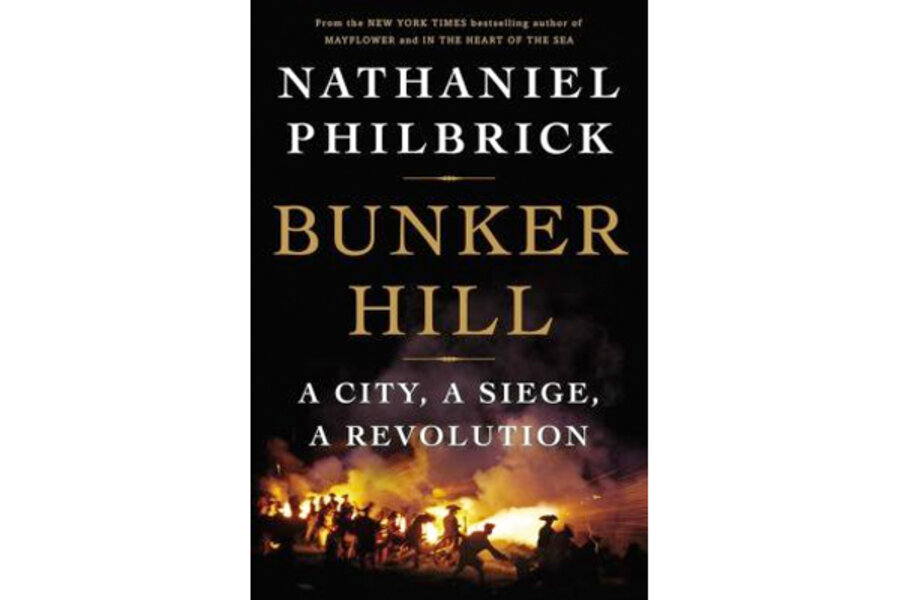Bunker Hill
Loading...
Nantucket-based historian and skilled helmsman Nathaniel Philbrick has sailed yet again into the headwinds of an oft-told tale with Bunker Hill: A City, A Siege, A Revolution. Earlier, Philbrick had set his compass for "Custer’s Last Stand" and the "Mayflower."
It was not always thus. A dozen years ago, Philbrick's breakout book, “In the Heart of the Sea,” resurrected the long-forgotten tragedy of the Essex, whose demise at the hands of a leviathan served as the inspiration for Melville’s “Moby Dick.” The doomed Nantucket whaler was as renowned in its century as the Titanic would be in the one to follow.
But absent such obscure yet compelling historical breezes, the more reliable trade winds of the past must suffice. Besides, a good yarn is worth retelling. How many of us, after all, truly appreciate what happened at Bunker Hill? It was the bloodiest of all the battles of the Revolutionary War, which like so many American conflicts had yet to be declared when the colonists and the British clashed on June 17 of 1775. The Red Coats captured Bunker Hill from the Patriot militias on their third assault, but at a terrible cost and to no long-term advantage. They would abandon Boston and the hornets’ nest that was Massachusetts in March of the following year.
After the skirmishes at Lexington and Concord in April of 1775, there were still Patriots who believed that reconciliation with Great Britain was possible. But after Bunker Hill, the Americans had crossed the Rubicon. British casualties exceeded 1,000. There was no more middle road. It was liberty or death time.
In retelling the incendiary tale of a city and a battle that sparked our revolution, the author introduces the reader to some famous, infamous, and not-so-famous characters. Future President John Quincy Adams was just seven when he and his mother Abigail watched and listened to the battle some miles distant. The moment would have a profound impact on Adams for the rest of his life. His father John was away in Philadelphia at the Continental Congress, while others, such as Dr. Joseph Warren, manned the front lines. George Washington would not appear to lead the New England fighters for more than two weeks after Bunker Hill.
The author presents Dr. Warren, 34 in 1775, as the precocious patriot who might have been president, or at least as famous as Founding Fathers John and Samuel Adams. It was Warren who overruled established protocols and decided that the movement of British troops toward Lexington and Concord in April of 1775 required a full-blown call up of the Massachusetts militias.
A Harvard graduate, a widower with four children, and an accomplished physician, Warren was at the center of the resistance to the British on all fronts, whether it required negotiations, propaganda, or preparations for the final rupture. Massachusetts was viewed, and not unreasonably, by many other colonists as a hotbed of hotheads, and Warren and other local leaders had to be careful not to get too far ahead of the parade.
While Warren may not be a household name today, the author cannot and does not claim sole credit for shining a spotlight on him: He acknowledges his debt to a recently published biography of the good doctor. Philbrick’s view of Warren’s potential is confirmed by the British General William Howe, who was surprised upon learning of the doctor’s death at Bunker Hill, surprised that a leader of his caliber would have thrust himself into the very teeth of the fighting: “This victim was worth five hundred of their men.”
If the author is not striking new veins of historical gold, he is adept at presenting what already has been mined in a compelling, balanced and fresh narrative. The American reader, who may view our Revolution as unambiguously glorious from the hazy distance of centuries, is introduced to disturbing examples of gratuitous cruelty and tribal excess. For example, early in the book, a detailed account of the tar and feathering of a British customs officer is not for the squeamish. Long before American Independence was a gleam in the eyes of Massachusetts’ residents, riotous behavior was commonplace in the colony.
Revolutions are not often pretty. Take it from no less a source than General George Washington, who thought his northern cousins-in-arms to be “an exceedingly dirty and nasty people.” With such insights, Philbrick fuels his narrative and places a great American story in perspective. He makes a good case that the push for independence ultimately had little to do with the Stamp Act and other purported or real atrocities. It had been brewing since 1620.
The whole point of America was that it was a new world, a place separate from and superior to the old one. A hundred years before the Declaration of Independence, when New Englanders were fighting a region-wide Indian uprising, Massachusetts Governor John Leverett told a visiting representative of King Charles II that his Majesty’s laws held no sway in America.
David Holahan is a Monitor contributor.








